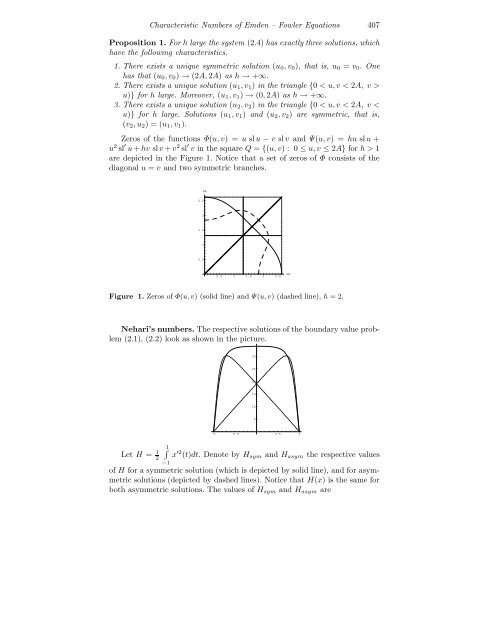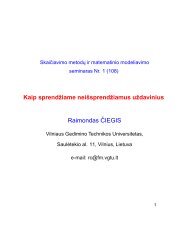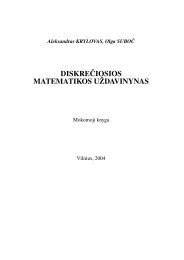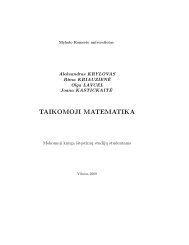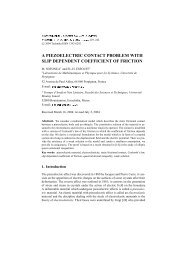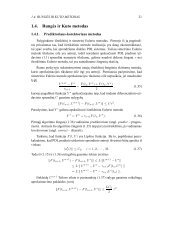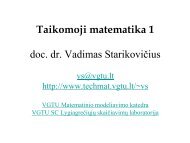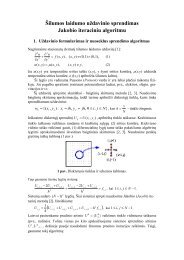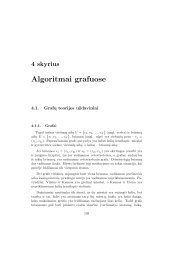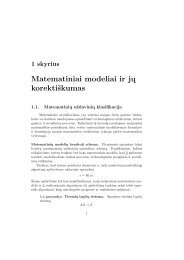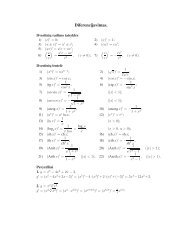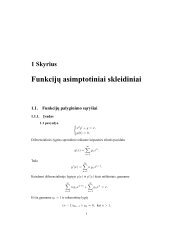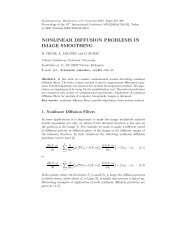characteristic numbers of non-autonomous emden-fowler type ...
characteristic numbers of non-autonomous emden-fowler type ...
characteristic numbers of non-autonomous emden-fowler type ...
Create successful ePaper yourself
Turn your PDF publications into a flip-book with our unique Google optimized e-Paper software.
Characteristic Numbers <strong>of</strong> Emden – Fowler Equations 407Proposition 1. For h large the system (2.4) has exactly three solutions, whichhave the following <strong>characteristic</strong>s.1. There exists a unique symmetric solution (u 0 , v 0 ), that is, u 0 = v 0 . Onehas that (u 0 , v 0 ) → (2A, 2A) as h → +∞.2. There exists a unique solution (u 1 , v 1 ) in the triangle {0 < u, v < 2A, v >u)} for h large. Moreover, (u 1 , v 1 ) → (0, 2A) as h → +∞.3. There exists a unique solution (u 2 , v 2 ) in the triangle {0 < u, v < 2A, v 1are depicted in the Figure 1. Notice that a set <strong>of</strong> zeros <strong>of</strong> Φ consists <strong>of</strong> thediagonal u = v and two symmetric branches.2A2.521.510.50.5 1 1.5 2 2.52AFigure 1. Zeros <strong>of</strong> Φ(u, v) (solid line) and Ψ(u, v) (dashed line), h = 2.Nehari’s <strong>numbers</strong>. The respective solutions <strong>of</strong> the boundary value problem(2.1), (2.2) look as shown in the picture.30252015105-1 -0.5 0.5 1Let H = 1 21∫−1x ′2 (t)dt. Denote by H sym and H asym the respective values<strong>of</strong> H for a symmetric solution (which is depicted by solid line), and for asymmetricsolutions (depicted by dashed lines). Notice that H(x) is the same forboth asymmetric solutions. The values <strong>of</strong> H sym and H asym are


